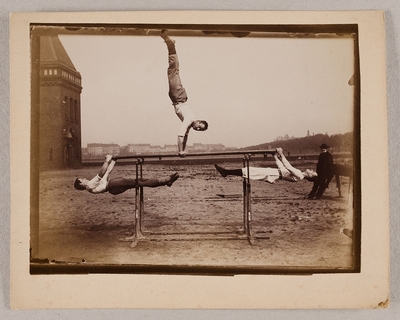Sharing is Caring: open access insights from the Museum für Kunst und Gewerbe Hamburg
The Museum für Kunst und Gewerbe Hamburg tells us how its shares its collections with the world.

- Title:
- Museum für Kunst und Gewerbe Hamburg
- Creator:
- Marcelo Hernandez
With approximately 500,000 objects from 4,000 years of human history, the Museum für Kunst und Gewerbe Hamburg (MKG) is one of Europe’s most important art and design museums. To celebrate the recent publication of its wonderful collections into Europeana, we spoke with Dr. Antje Schmidt, Head of Digital Cataloguing and MKG Collection Online at the MKG, a member of the Europeana Art Advisory Board and Members Council, to find out how the museum shares its collections with the world.
A recent European Commission report praised the MKG for publishing a substantial part of its collections into the public domain and available to download in high-quality. How and why did your museum adopt this policy?
We believe that the collection of the MKG belongs to all of us. The museum was founded in the 19th century to share examples of human creativity and related knowledge with as many people as possible. One of the main aspects was to let the collections be a source of inspiration for new creations. In the digital sphere, we want to make it as easy as possible for everyone to reuse digital images of works of art that are already in the public domain.
What advice would you give to other museums considering a similar policy?
One of the biggest challenge for many museums is to clear copyright and related rights and to clearly communicate how images and metadata can be reused. But if museums consider publishing their collection online they have to do it anyway. I would recommend starting with those parts of a collection that are already identified as being in the public domain and to make sure that no new rights are produced when they get digitized. This is recommended by the European Commission and explained in the Europeana Public Domain Charter. It doesn’t mean that there have to be thousands and thousands of objects. We started the MKG Collection Online with the small amount of 3,000 objects, now there are more than 12.000.

Turner am Barren, Hamann, Heinrich, Museum für Kunst und Gewerbe Hamburg, CC0
We're thrilled to have the MKG in Europeana. What do you hope to achieve through our partnership?
We hope to make the MKG more widely known and encourage the use of its digitized holdings for research, creative projects or just for fun. Europeana is one of our most important partners, because it creates new content based on MKG’s digital images and metadata and share it online via social media or projects like Art Up Your Tab. Furthermore, it opens up new connections with content from other European cultural heritage institutions, and helps to get connected with other institutions to foster cooperation for funding opportunities. As Neal Stimler from Metropolitan Museum pointed out, when it comes to engaging with a collection, it doesn’t matter if you visit the museum’s own site or find the content elsewhere.
Which audiences are you trying to reach?
Anyone interested in cultural heritage and creativity. We not only offer images for download to inspire makers and designers, but also provide metadata in machine-readable form via Github to encourage developers or data analysts to work with it.
How does the MKG’s policy compare with other German museums?
Most German museums are still hesitant to clearly label their artworks and objects that are already in the Public Domain (PD) in physical form as PD after digitisation. The Representative for Cultural and Media Affairs (BKM) and the respective ministries in the federal states should raise awareness why contributing to the Public Domain is a benefit not only for the museum but for society at large, and clearly demand an ‘open by default’ policy following the Commission’s recommendation.
What are your future plans?
One of our future goals is to publish an API that makes it easier for others to reuse MKG Collection Online’s content. We would also like to find out more about the needs of the users, and to extend our cooperation with the Wikipedia community by continuing to contribute MKG’s collections to the Wikimedia Commons.
Can you share some examples of projects using these resources?
One example is the Zeitblick-App that was created during the Coding da Vinci Nord Hackathon in 2016. Users take a selfie and the app shows them a matching portrait from MKG’s historical photography collection. They then get additional information about their historical self and get to know the collection in a playful way that doesn’t require any previous knowledge.
Dr. Schmidt and Douglas McCarthy will be speaking at Museums in the Digital Sphere: Opportunities and Challenges on 6 October at the Pinakothek der Moderne, Munich.
by Camille Tenneson
